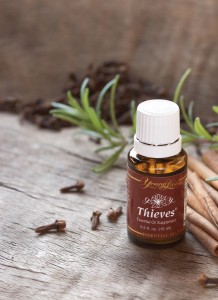 I love school. I do. I always have. I’d be in school right now, getting another degree in something if time and money would allow.
I love school. I do. I always have. I’d be in school right now, getting another degree in something if time and money would allow.
But I must say that RE-living school through my children’s projects borders on torture. I straddle that line of trying to be helpful and guide them so they will develop excellent study skills and here-let-me-do-that-so-we-can-just-get-it-done-already.
The latest project in the parade of projects, however, was for the sixth grade science fair. And after the late nights and head scratching and double-sided tape fiascos, it actually proved interesting.
While some kids were sticking wires in potatoes and such, my 11-year-old wanted to focus on germs in dirty bathrooms. Specifically, she wanted to test my beloved essential oils against chemical household cleaners. Yes! I was hooked. I wanted to know, too, just how well Young Living’s Thieves essential oil blend performed when placed side by side against Clorox Bleach and Lysol bathroom cleaner.
We partnered with my daughter’s best friend and her mom (another essential oils user and comrade). So, we found an experiment kit online that was specifically made for growing bacteria and then testing different cleaners to see which was most effective at either killing the bacteria or at least stopping its growth (we weren’t really sure what we would discover).
The Science Experiment: Thieves Essential Oil Blend vs. Bleach and Lysol
Now, please keep in mind that we are working on a sixth grade level here! I am an artistic, English person; you’re not going to find much math or science going on in my brain. 🙂 Stacy—my daughter’s best friend’s mom—was a science major and is far more advanced than I in these areas, though she spends most of her days now taking care of her kids and selling real estate.
My point is, is that I’m sure our scientific method would not hold up to the scrutiny of professionals. But for sixth grade, general common sense, and anecdotal evidence, we think we proved some interesting points.
So, the girls’ hypothesis was that Thieves essential oil blend would best inhibit bathroom bacterial growth. Of course, Stacy and I wanted this to be the case. I wasn’t so sure. I honestly thought the bleach would simply obliterate everything in its path, marking it a clear winner.
Stacy made the petri dishes for us by heating and then pouring agar into the dishes. She then allowed them to set up. To further prove my novice status, I will tell you that I didn’t even know what agar was until about a month ago. That’s right. If I ever used it in school, I had no idea what it was called.
Next, the girls took sterilized swabs and rubbed them over several bathroom surfaces—sink, counter, floor. They then rubbed them in a zigzag pattern into four separate petri dishes. They labeled one “Control” and did nothing more to it. Then, they took four separate squares of blotter paper. They saturated one with Clorox bleach, one with Lysol bathroom cleaner, and one with Thieves essential oil blend. They put one square into each of the remaining petri dishes and labeled them accordingly.
The girls put the petri dishes into an insulated, zippered lunch bag and put it into a dark closet to grow. We checked it every few days and charted the bacterial growth.
The hardest part of the entire experiment was figuring out exactly how to measure our observations. We finally decided we would measure in inches the distance between the outer edge of the treated blotter paper and the innermost edge of the bacterial growth.
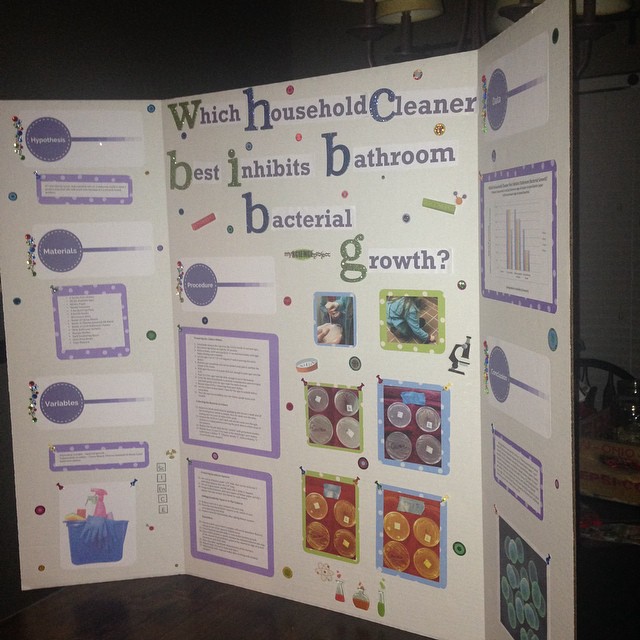
So the early leader was the Clorox bleach. The first four days, we noticed no growth in its petri dish. The Thieves was a close second with a defined edge around the blotter paper. The Lysol did not seem effective much at all. We noticed growth in its petri dish closer in to the blotter paper.
And then something sort of unexpected happened. On the fifth day, we checked the dishes again. More bacterial growth appeared in the Clorox and Lysol dishes, but there was no change in the Thieves dish at all! Thieves was holding back the growth—keeping it at bay. (The girls posted the chart below on their science board. It shows the different measurements on the different days.)
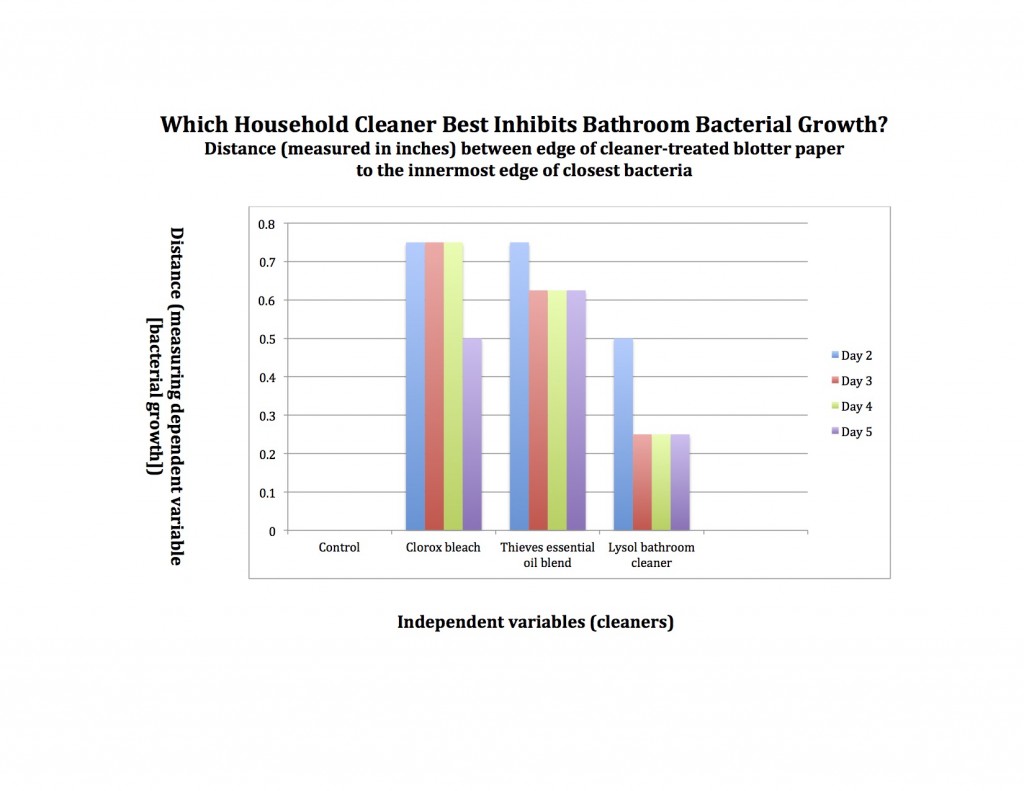
The Conclusion: Thieves Wins!
We concluded, actually, that the hypothesis was correct. Thieves essential oil blend is the best at inhibiting bathroom bacterial growth.
Here’s what the girls posted on their board and in their log books:
My hypothesis was correct. On Day 5, Thieves essential oil blend cleared 5/8 inch diameter around the treated blotter paper. Lysol cleared 2/8 inch diameter around the treated blotter paper. Clorox cleared ½ inch diameter around the treated blotter paper. No new bacterial colonies grew in the dish with Thieves. The Lysol dish had some more bacterial colonies grown but not within the cleared perimeter. The Clorox dish had many new bacterial colonies to grow over night. We proved that Thieves essential oil blend best inhibited bacterial growth on a bathroom surface.
In my own words, I’d put it this way: Clorox bleach is probably best at suppressing bathroom bacterial growth on contact, but it doesn’t necessarily keep working. Thieves does keep the bacteria from growing and/or encroaching into treated territory on a longer-term basis. And Lysol? It’s pretty much useless.
Oh, and we the girls won 2nd place in the science fair! 🙂

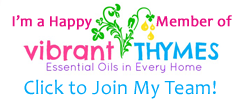



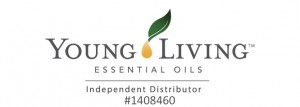


 Facebook
Facebook Twitter
Twitter